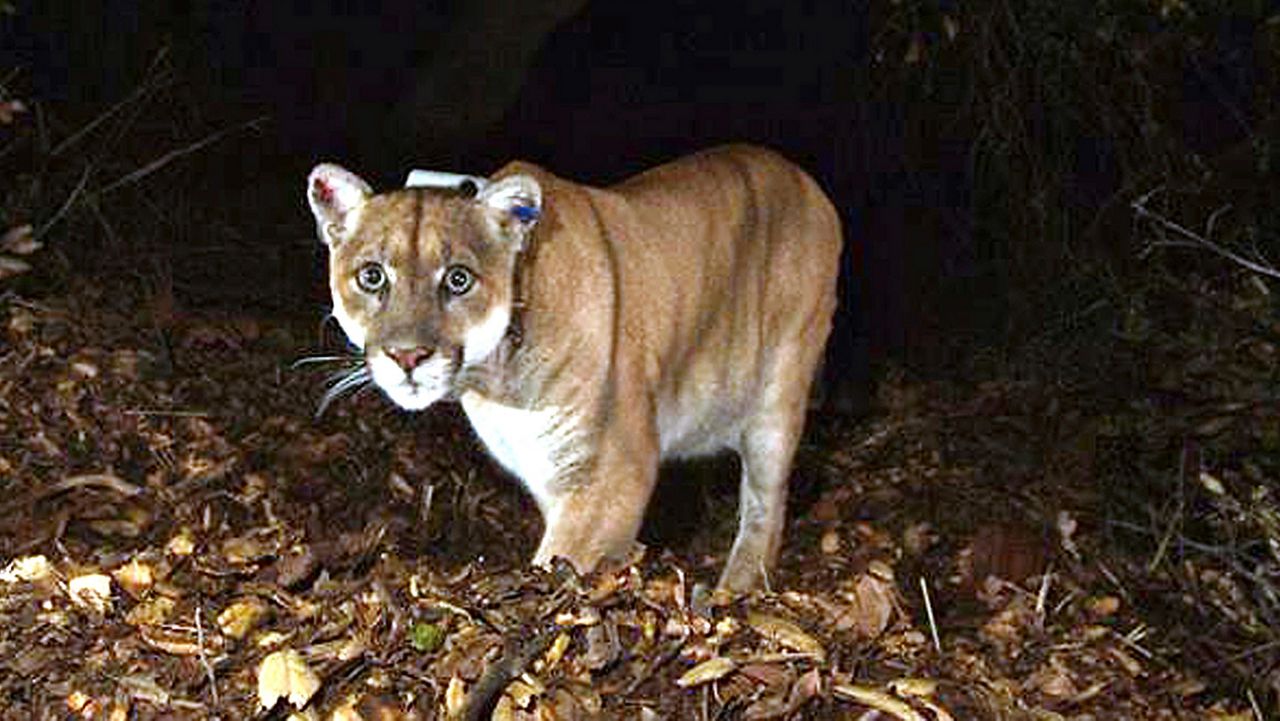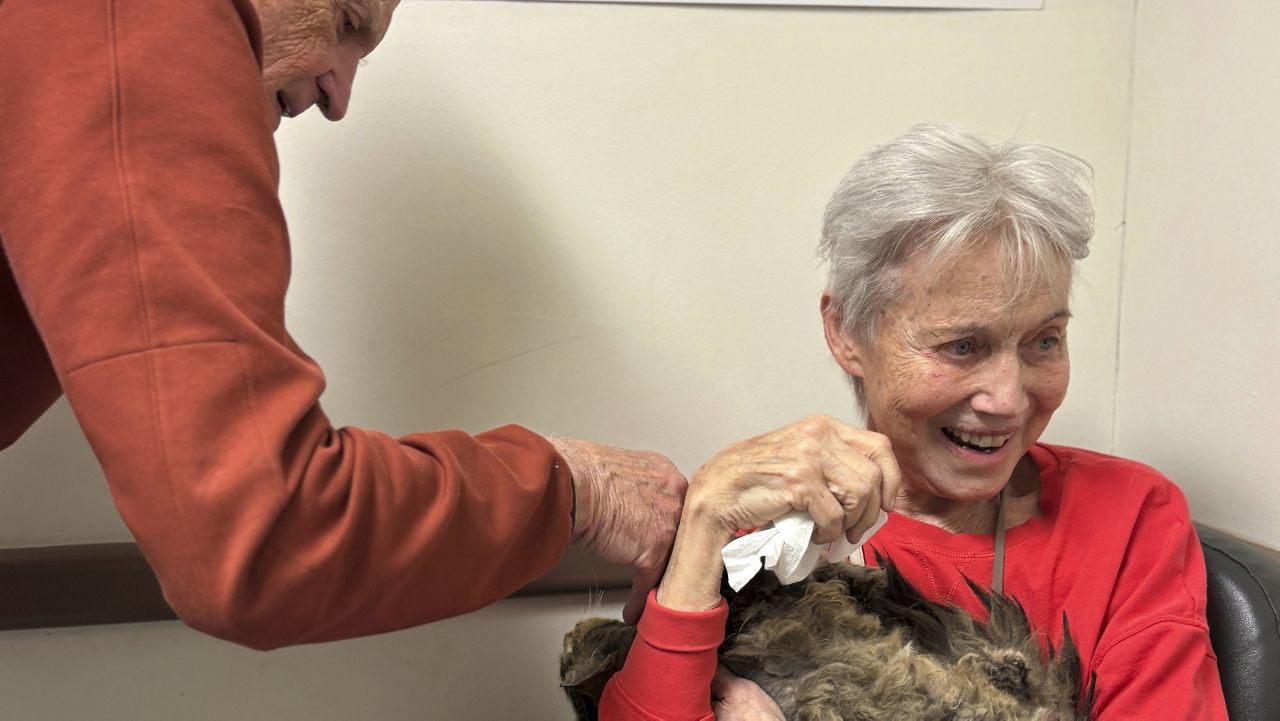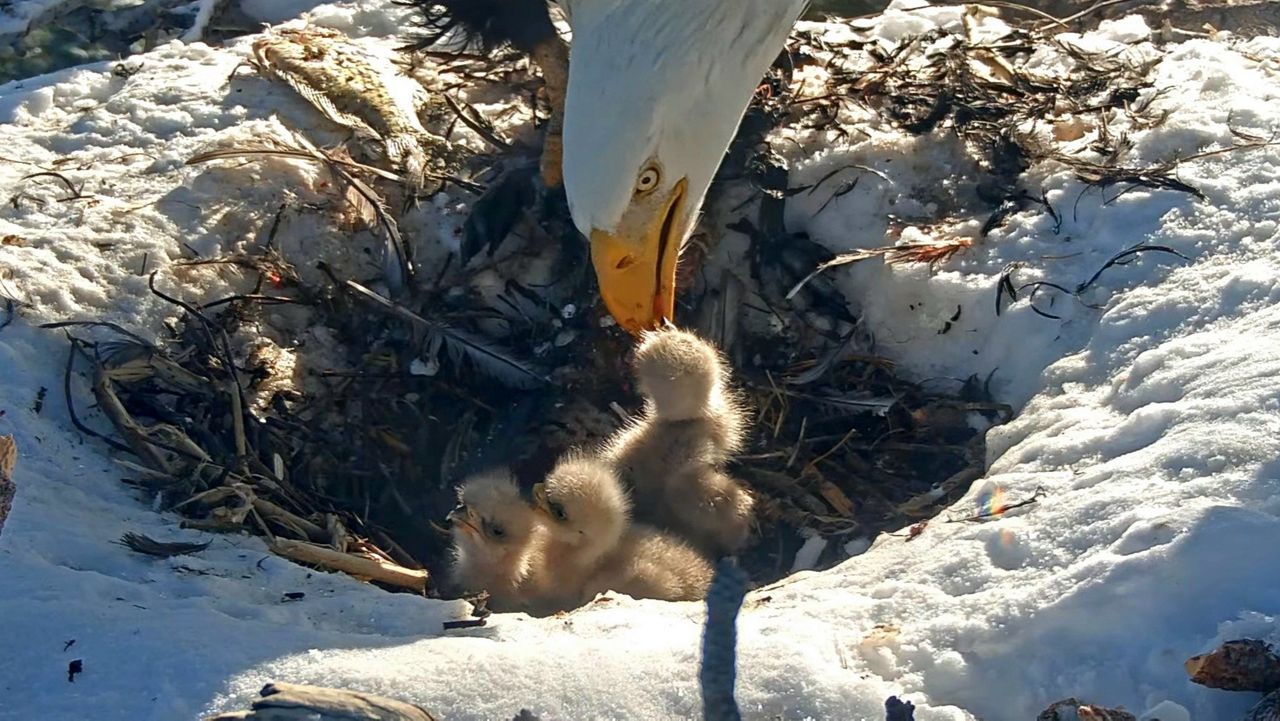LOS ANGELES (CNS) — A final necropsy conducted on famed Southland mountain lion P-22 determined the cat was suffering from "multiple severe injuries" and chronic conditions that limited his ability to function in the wild, state wildlife officials said Wednesday.
P-22, known as the “Hollywood Cat,” was euthanized Dec. 17 after being examined by wildlife officials who captured him following signs of distress, including a series of attacks on pet dogs in the area.
The necropsy conducted by veterinary pathologists at the San Diego Zoo confirmed injuries to his head and right eye that appeared consistent with reports that the lion was struck by a vehicle shortly before his capture, including an orbital fracture with bleeding.
The exam also identified an older traumatic injury that included a rupture in the diaphragm leading to herniation of the liver and sections of connective tissue from the abdomen.
“The examination also confirmed that he was underweight, arthritic and had progressive and incurable kidney disease, as determined before his death,” according to a statement from the state Department of Fish and Wildlife and National Park Service.
“He also had a severe parasitic skin infection over his entire body, caused by demodectic mange and a fungus, specifically ringworm. This is the first documentation of a demodectic mange infection and a concurrent systemic ringworm infection in a California mountain lion.”
Toxicology testing determined that P-22 had been exposed to rodent poison — a common malady of lions in the wild — but he was not showing any poisoning symptoms.
P-22, believed to be about 11 or 12 years old, was one of the oldest lions in a continuing NPS study of lions in the Santa Monica Mountains. He was first captured and collared in March 2012, when he was estimated to be 2 years old.
His exploits were frequently documented over the years, as he was captured on home security cameras while moving through the area. He was most famed for successfully crossing both the San Diego (405) and Ventura (101) freeways, making his home in the Griffith Park area.
Likely born in the Santa Monica Mountains, P-22 somehow found his way to his tiny, nine-square-mile home in Griffith Park, separated from his birth area by two of the busiest freeways in the world.
Defying expectations, he persisted for more than 10 years in the smallest home range that has ever been recorded for an adult male mountain lion.
P-22 became the face of the NPS lion-tracking study, and was held up as an example of a cat surviving the treacherous conditions facing the big cats living in the geographically confined spaces of the Santa Monica Mountains. With the population mostly isolated, a recent study found that the lions could potentially become extinct within 50 years without the introduction of new animals to limit inbreeding.
“P-22 was a fascinating animal to study,” Jeff Sikich, the lead field biologist of the NPS mountain lion study, said in a statement. “Not only was he an important ambassador for urban wildlife, but his scientific contributions were also many. He helped us understand how mountain lions coexist with humans in this complex urban landscape, and his legacy will live on through our heightened awareness of how to live in harmony with wild neighbors and growing public support for wildlife crossings.”
A public celebration for P-22 was held at the Greek Theatre in February, and the cat was buried at an undisclosed location in the Santa Monica Mountains.
The Wallis Annenberg Wildlife Crossing over the Ventura (101) Freeway is under construction in the Agoura Hills area, and is seen as a "major and critical step" in enabling the big cats and other wildlife to expand their territories — and do so safely, without having to cross major roads.
The landscaped crossing will span 10 lanes of the 101 Freeway in Liberty Canyon when completed in 2025, and aims to provide a connection between the small population of mountain lions in the Santa Monica Mountains and the larger and genetically diverse populations to the north.










